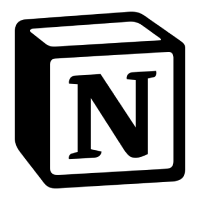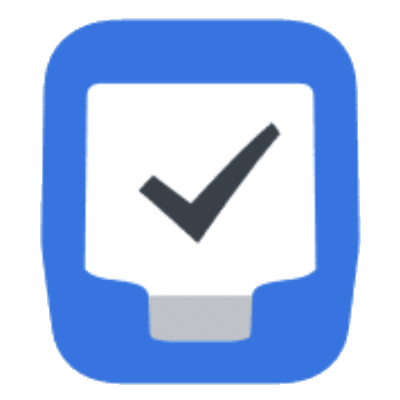Best Onenote Alternatives for 2025

Onenote is the grandfather of all note taking apps, for better and worse. Since launching nearly 20 years ago (!), Onenote has built a rich set of features, but it has struggled to keep pace with newer note taking alternatives that were built with mobile in mind.
As our analysis of Onenote shows, Onenote has historically never lacked for features. To the contrary, the most common laments one hears from Onenote users tend to be "too many features to navigate through" and "too slow to find the desired note."
In terms of feature coverage, Onenote's strength is in the numerous types of formatting that can be embedded in notes, including Microsoft Office documents. When it comes to collaboration, backlinks, or note publishing, the weaknesses of being the oldest note app on the market become more apparent.
The Can't-Go-Wrong Onenote Alternatives
For users who want a blend of Onenote's best features, our research highlights four apps that stand apart as favorite destinations for past Onenote users.

Better than OneNote
- Better overall pen experience with richer customization options
- Superior PDF reading and annotating features
- Robust page size options & export formats
Room for Improvement
- Fewer text formatting options and no tables
- No infinite canvas for your notes like in OneNote
- No Windows, Linux or Android version

Better than OneNote
- Better note organization via hierarchical tags
- More polished search, including OCR and note quick-open
- Better web clipping
Room for Improvement
- Significantly fewer drawing capabilites compared to OneNote
- Slower than OneNote in most of our tests
- Free version lacks features and imposes a device limit

Better than OneNote
- DIY potential via databases and table formulas
- Superior note collaboration and publishing
- Large collection of community-sourced note templates
Room for Improvement
- No drawing or handwriting supported
- So-so mobile app ratings
- Limited offline use

Better than OneNote
- Modern, award-winning design
- Best iPad app among note apps tested
- Bidirectional linking available
Room for Improvement
- No Windows, Linux or Android version (web version in beta)
- No image OCR
- No table support
🧐 Personalized OneNote alternative recommendations
Choose a platform and at least one feature group below. Results will be sorted by which note apps share the most features with OneNote, with precedence given to apps that offer a superset of the features you expect.
All OneNote Alternative Note Apps Analyzed
As of January 2025, NoteApps.info has indexed 44 note taking apps across 341 features in 20 feature domains. We prioritize new note apps and features to analyze based on the votes of our community. This lets us provide you a data-backed take on which note apps will best suit your individual tastes.
A general summary of each app compared to OneNote is provided from Google results below.
How the most popular note taking apps compare to OneNote generally
Want to dig beyond personalized note app recommendations? Here's how the rest of the field compares to OneNote as of 2025. All note apps are sorted alphabetically.

Amplenote isn't especially similar to Onenote. The two share support for several formatting features, and both allow deep hierarchies to be used to organize notes. Amplenote supports more robust security features, note publishing, backlinking, transclusion, and other modern note taking features that Onenote lacks. The biggest reason to switch from Onenote to Amplenote is if you use your note taking app to organize your to-do list. While to-do lists are an afterthought in Onenote, they're central to Amplenote.

Guiding Tech provides a nicely detailed rundown with lots of screenshots at https://www.guidingtech.com/apple-notes-vs-onen....
Their conclusion is that "If you use a Mac, an iPhone and an iPad heavily, then you might be comfortable in Apple's ecosystem with the Apple Notes. However, you should give Microsoft OneNote a shot to experience if you're missing out on something. Especially the capability to store website clips."

Most of the user-review websites place these two apps in pretty similar territory as of late 2020. The biggest advantage of Asana is its team integration and the ability to send tasks to team members.

Guiding Tech offers a comparison of the two at https://www.guidingtech.com/onenote-vs-bear-not.... Their conclusion is "Both OneNote and Bear Notes are excellent note-taking apps. If you want something free and works across all platforms, then go with OneNote. Bear Notes offer better UI, robust organization with tags, and a bunch of theme options to spice up the software experience. As for now, I’m sliding with OneNote..."

There aren't a lot of resources on the internet that directly compare these two apps, since their use case tends to be quite different. Coda is a much different product than Onenote in that it focuses on teams, collaborative writing, and spreadsheets. Onenote is a tool better suited for individual use. The fact that Coda was launched almost 15 years after Onenote is apparently in the design & speed advantages enjoyed by Coda.

This comparison is battle of the two original heavyweights from the first generation note taking apps. ComputerWorld weighs in on how they compare here https://www.computerworld.com/article/2488890/d... In support of Evernote, they repeatedly mention how great its Web Clipper is compared to Onenote.

A great review from late 2020 is available at https://osgav.run/post/onenote-vs-joplin.html. It points out how much more automation-friendly Joplin is, and how the local storage prevents situations where note content can be lost due to Microsoft shenanigans.

Nimbus has created a dedicated page to list out the advantages they hold over Onenote, check it out here https://nimbusweb.me/nimbusnote-vs-onenote.php. As they summarize, "Slowed down by OneNote’s dated, clunky interface? Need more integrations that actually work? Switch to Nimbus!"

NoteJoy has created a page dedicated to listing their advantages over Onenote, you can review it for yourself here https://notejoy.com/onenote-alternative. They summarize by saying "Notejoy is a fast and beautiful way for teams to capture, share, and organize their notes. Unlike OneNote, Notejoy is built to be collaborative from the ground up."

Guiding Tech compares Onenote to Notion here https://www.guidingtech.com/notion-vs-onenote-c.... They state "Notion is positioning itself as a cross between note-taking app (OneNote), to-do lists (Todoist), Kanban (Trello), calendar (Google Calendar) and database management (Airtable) apps. It’s a nice concept. Notion is powerful and suited for power users. That said, security is still not there yet"

Slant.co https://www.slant.co/versus/2130/37045/~microso... (beware the ad payload in Chrome) gives Obsidian higher marks than Onenote in every category they rate. In particular, they call Obsidian "the #1 Personal Knowledge Base" app, whereas Onenote comes in at #11 on that front.

Guiding Tech provides a screenshot-rich comparison of the apps at https://www.guidingtech.com/dropbox-paper-vs-on.... In support of Dropbox Paper, they summarize its advantage saying "If collaborating with peers, think business and enterprise solutions, is your priority and you need something less flashy with third-party app support, go for Dropbox Paper."

Onenote and Roam are about as apples-to-oranges as you can find from two apps. Roam is built to make networked note taking possible, which enables new modes of thought. For users that don't need to create content in a flat note (Roam is implemented exclusively through a hierarchy, like Workflowy), Roam offers modern accouterments Onenote lacks.

SuperNotes themselves tackles the advantages they afford relative to Onenote: https://supernotes.app/alternative-to-onenote. The top factors they mention:
1. Fast, like really fast
2. Easy to learn
3. Collaboration





























